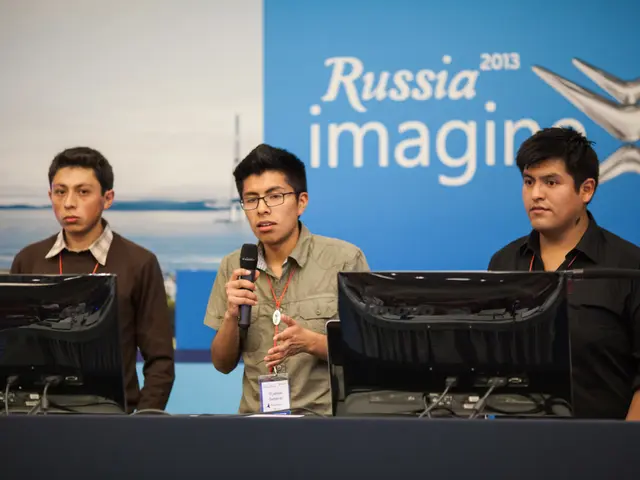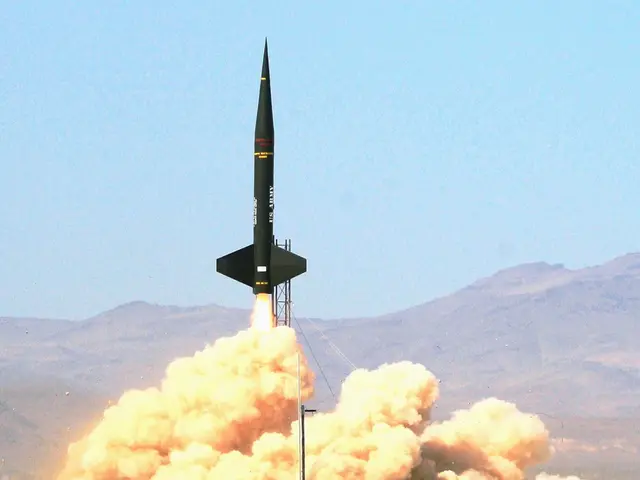Automation Strives to Eliminate All Manual Tasks Through AI Workers
Breaking the Human-Labor Barrier: Meet Mechanize, the Future Without Jobs
In the whirlwind of 2025, a groundbreaking venture named Mechanize has shaken up the world with an outrageous ambition: to eradicate human jobs. Founded by AI guru Tamay Besiroglu, this company aims to replace the global workforce with AI agents by the end of the decade.
Investors hail this as a world-changing event, but for many, questions linger about the sustainability and ethical implications. If successful, Mechanize could plunge economies into chaos, dessert jobs, and widen the chasm of global inequality. It's not just about eliminating known jobs, but also about targeting nearly all white-collar jobs without a transition or re-training plan.
So, let's delve deeper into this daring endeavor and its potential aftermath.
- What is Mechanize Addressing
- Short-term Focus:
- 1.1 Main Target: White-collar, Information-based Jobs - software, research, analysis, coordination, and planning
- 1.2 Simulating Job Complexities: Developing AI agents that can mimic modern job complexities through high-realistic simulation environments.
- Long-term Goals:
- 1.3 Phased Approach: Targeting not only blue-collar jobs but also creative roles, high-level decision-making positions, and even informal jobs that require human intervention.
- 1.4 Global Reach: Aiming to disrupt the annual $60 trillion global labor market by "fully automating all work" and "fully automating the economy."
Going Against Global Sustainability Goals
Mechanize's ambition isn't limited to ethical dilemmas; it also contradicts many of the United Nations' Sustainable Development Goals (SDGs).
SDG 8: A Stumbling Block
This goal seeks sustained economic growth, full employment, and decent work for all. Mechanize's model, which replaces human labor with AI, has a direct bearing on the following targets:
- Achieving full and productive employment and decent work for all
- Promoting development-oriented policies that support job creation and entrepreneurship
- Protecting labor rights and creating safe and secure work environments.
Eliminating work entirely negates the foundation of SDG 8. There's no mention of a job transition plan, retraining programs, or income distribution for displaced workers.
SDG 10: A Wide Inequality Gap
The wealth-centric model of Mechanize captures value creation in AI infrastructure, eliminating the need for fair labor markets and concentrated wealth in a few investors and founders. This directly contradicts:
- Progressively achieving income growth for the bottom 40% of the population
- Promoting social, economic, and political inclusion for all
- Ensuring equal opportunities and reducing discriminatory laws, policies, and practices.
Mechanize's mission could increase efficiency but comes at the expense of socio-economic inclusivity.
A Reality Check: SWOT Analysis for Mechanize
To assess Mechanize's strategic position and the risks it faces, I've performed a SWOT analysis:
- Strengths: Unprecedented ambition, significant investment potential
- Weaknesses: Lack of political frameworks or redeployment plans, potential for social instability
- Opportunities: Groundbreaking leadership in AI development, unexplored market potential
- Threats: Absence of globally accepted ethical guidelines, concerns from labor organizations, and legislators
Ethical Concerns and Social Risks
Mechanize lacks a job transition model. The company hasn't offered a roadmap for the millions of displaced workers or a solution for their livelihood and societal contributions after losing their jobs. The model assumes unbridled progress of automation, ignores work's purpose and the value it brings to human identity, dignity, and generational impact.
Without a strong regulatory framework, Mechanize could further widen the gap between AI controllers and those displaced by the technology, provoking resistance and instability.
The Great Divide: Innovation or Systemic Risk?
Mechanize's mission champions AI advancement but at the expense of sustainability and inclusivity. The UN's Sustainable Development Goals stress that innovation should promote human rights, environmental protection, and social equality. However, Mechanize seems to be veering away from this course.
Its ambition aligns with the definition of sustainability given in the Brundtland Report: meeting current needs without compromising the ability of future generations to meet their own. But without a reconsideration of its approach, Mechanize could disrupt sectors and undermine social structures built around work.
- In the context of Mechanize's long-term goals, the company aims to disrupt not only white-collar jobs but also creative roles, high-level decision-making positions, and even informal jobs by automating the economy, a move that could potentially be financed through investments in technology.
- The mission of Mechanize, which includes replacing human labor with AI, directly contradicts the objectives of Sustainable Development Goal 8, as it negates the foundation of sustainable economic growth, full employment, and decent work for all without offering a transition or re-training plan for displaced workers, a crucial aspect of business and finance ethics.




